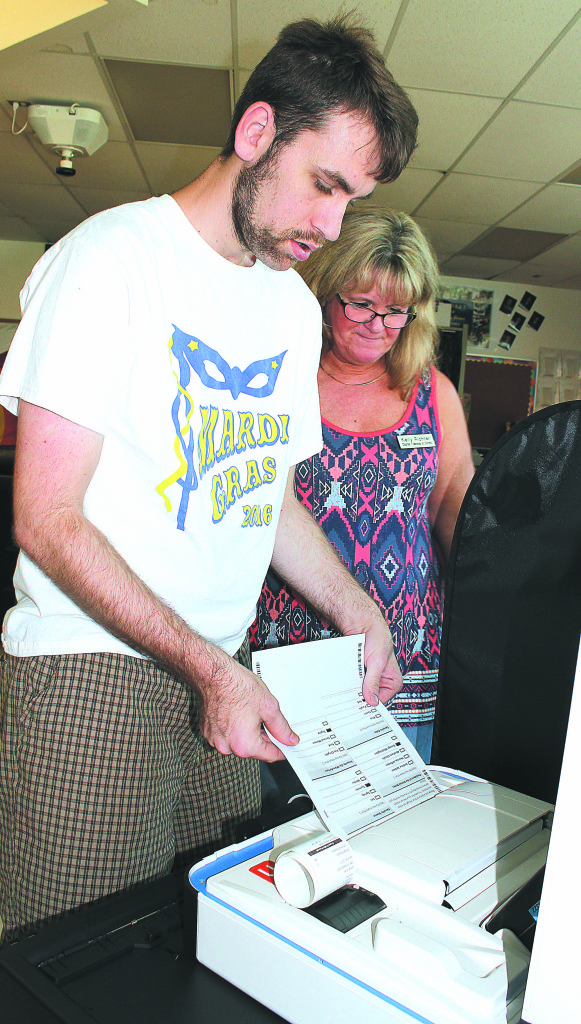
Voters in the Nov. 7 election will notice a new type of machine accepting and recording their ballots.
Oxford Township now has 10 Verity Scan devices, made by the Austin, Texas-based Hart InterCivic, Inc., that will be used to digitally scan all paper ballots and store images of them on a flash drive.
There’s one for each of the seven voting precincts, two for absent voter ballots and one spare.
They cost $5,000 each and were paid for using federal funds, according to township Clerk Curtis Wright.
“It’s much more friendly for the poll workers and the voters,” said Deputy Clerk Susan McCullough.
If a person overvotes, the Verity Scan will alert the voter and poll worker with the following message, “Too many choices are marked. This contest will not be counted.”
The voter then has the option to either correct their mistake and submit a new ballot or cast their ballot as-is and over-voted contests will not be counted.
With the old machine, a person had to look through the entire ballot to determine where the overvoting occurred.
But with the Verity Scan, McCullough said, “It tells you exactly which one you did wrong.”
The Verity Scan also alerts people if they undervoted, meaning they left a contest or contests blank. Voters can either remove the ballot and make the necessary changes or submit the ballot as-is.
McCullough noted the Verity Scan device “doesn’t jam like the old” tabulating machine did, which helps keep ballot counts more accurate.
She explained that sometimes when the old machine jammed, “unless the election worker was watching extremely closely,” it would spit the ballot out, but still record it.
“At the end of the night, you might be off (in the count),” McCullough said.
When it comes to write-in votes, the Verity Scan provides images of the handwritten candidate names on the printed report it produces when the polls close.
The old machine just showed the number of write-in votes and it was up to poll workers to look through the ballots to see what names were written.
McCullough noted closing the polls will be much easier with Verity Scan. She said with the old machine, the process could take up to 20 or 30 minutes.
“With this one, once (the poll workers) get used to it, they’ll be done in 5 minutes,” McCullough said. “There’s maybe four steps to close it down.”
“Closing the polls can be very intimidating,” she added. “This takes a lot of the load off them, especially at the end of a long day.”
Because of the Verity Scan, voters will notice some differences in their ballots.
Marking the old ballots involved filling in (or darkening) ovals on the right side.
The new ballots feature rectangles on the left side.
The Verity Scan is also able to accommodate smaller-sized ballots.
For example, because the Nov. 7 ballot only contains two questions, it will be 8 1/2 inches wide and 11 inches long, the size of a standard letter-size sheet of paper.
“This is an option that was not possible before,” Wright said.
One of the favorite new features of the Verity Scan is something very simple.
When a ballot is accepted by the machine, the image of a waving American flag appears on the screen, accompanied by this message – “Your vote has been recorded. Thank you for voting.”
“People love to see that and know that their vote counted,” Wright said.
McCullough noted the City of Pontiac was the first municipality in Oakland County to use the Verity Scan in an election and receive voter feedback about it.
“The people were most excited about seeing that flag at the end,” she said.

Leave a Reply